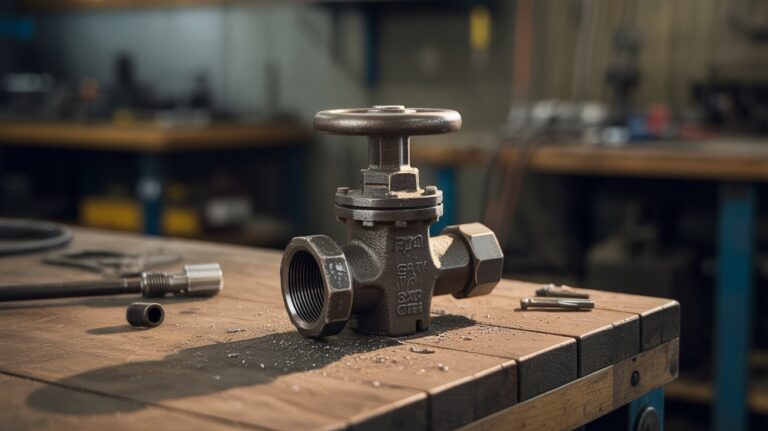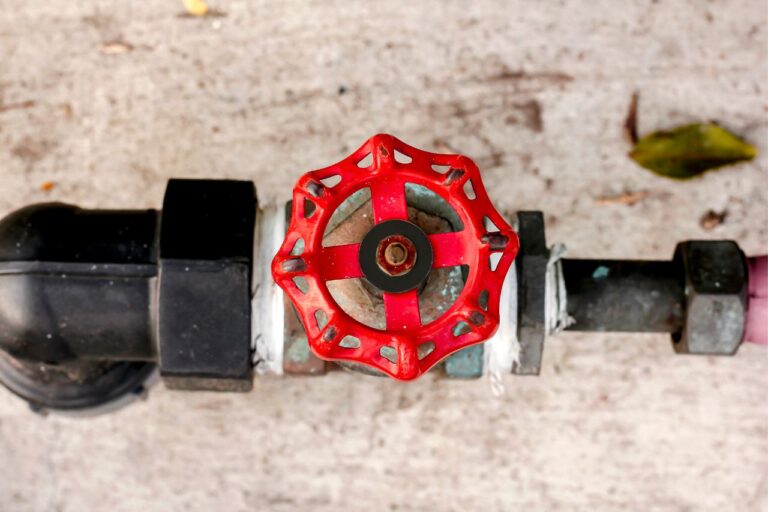Step-by-Step: How to Clean Your Sump Pump Check Valve
Discover the hidden threat in your basement: water damage. Your sump pump is the unsung hero that safeguards your home from flooding. However, overlooking a small but critical part of the system can spell disaster. Enter the check valve – a seemingly insignificant component with a crucial role in your sump pump’s efficiency. Learn why regular cleaning of this often-neglected valve is essential to prevent water damage. Explore the world of sump pump check valves and ensure a dry basement, giving you peace of mind.
What is a sump pump check valve?
Before we dive into the importance of cleaning your sump pump check valve, let’s first understand what it is and how it functions. A sump pump check valve is a small mechanical device that is typically installed on the discharge pipe of your sump pump. Its primary function is to prevent water from flowing back into the sump pit once it has been pumped out.
The check valve consists of a one-way flapper or gate that opens when the sump pump is activated, allowing water to be discharged away from your home. Once the pump shuts off, the check valve quickly closes, preventing any backflow of water. This ensures that the pumped water is directed away from your basement, preventing potential flooding and water damage.
The role of a sump pump check valve in preventing backflow
The role of a sump pump check valve in preventing backflow cannot be overstated. Without a functioning check valve, water that has been pumped out of your sump pit can flow backward, causing it to re-enter the pit. This can lead to a vicious cycle where the pump continues to cycle on and off, struggling to keep up with the influx of water.
Backflow not only puts a strain on your sump pump, but it also increases the risk of basement flooding. The water that flows back into the pit can quickly accumulate, overwhelming the pump’s capacity and leading to water seepage through cracks in your foundation. This can result in costly repairs and damage to your belongings.
Signs that your sump pump check valve needs cleaning
Now that we understand the importance of a properly functioning check valve, it’s essential to recognize the signs that indicate your sump pump check valve may need cleaning. Ignoring these signs can lead to a compromised sump pump system and potential water damage in your basement.
One of the primary indicators that your check valve needs cleaning is when you notice water flowing back into the sump pit after the pump has shut off. This backflow can be observed as a sudden surge or gurgling sound coming from the discharge pipe. Another sign is if you notice reduced water flow or pressure during the pump’s operation.
Additionally, if you find that your sump pump is cycling on and off more frequently than usual, it could be a sign that the check valve is clogged or malfunctioning. Lastly, any visible debris or sediment buildup around the check valve is a clear indication that it needs cleaning.
The importance of regular cleaning for sump pump check valves
Regular cleaning of your sump pump check valve is vital to ensure its proper functioning and prevent potential issues. Over time, debris, sediment, and other contaminants can accumulate around the check valve, obstructing its movement and impairing its ability to close properly.
Cleaning the check valve not only removes these obstructions but also helps maintain the overall efficiency and effectiveness of your sump pump system. Regular cleaning reduces the risk of backflow, ensures proper water discharge, and extends the lifespan of your sump pump.
Steps to clean your sump pump check valve
Cleaning your sump pump check valve is a relatively straightforward process that can be done by following a few simple steps. Here’s a step-by-step guide to help you clean your check valve effectively:
1. Start by disconnecting the power supply to your sump pump to prevent any accidents or injuries.
2. Locate the check valve on the discharge pipe. It is typically situated above the sump pit and can be identified by its one-way flapper or gate mechanism.
3. Remove the check valve from the discharge pipe by unscrewing the retaining nut or clamps.
4. Inspect the check valve for any visible debris, sediment, or obstructions. Use a flashlight to get a clear view of the internals.
5. Clean the check valve using a soft brush or cloth. Gently scrub away any buildup or sediment, ensuring that the flapper or gate can move freely.
6. If the check valve is severely clogged or damaged, consider replacing it with a new one. Consult a professional if you’re unsure about the replacement process.
7. Once the check valve is clean and free from obstructions, reattach it to the discharge pipe using the retaining nut or clamps.
8. Restore the power supply to your sump pump and test its operation to ensure that the check valve is functioning correctly.
Remember to consult your sump pump manufacturer’s instructions for specific cleaning guidelines or consult a professional if you’re unsure about the process.
Common mistakes to avoid when cleaning a sump pump check valve
While cleaning your sump pump check valve is essential, it’s equally important to avoid common mistakes that can compromise its effectiveness. Here are some common mistakes to avoid:
1. Using harsh chemicals or abrasive materials to clean the check valve. These can damage the valve’s internal components and compromise its function.
2. Neglecting to disconnect the power supply before cleaning. Failing to do so can result in electrical hazards or damage to the pump.
3. Rushing through the cleaning process. Take your time to thoroughly clean the check valve, ensuring that all obstructions are removed.
4. Reattaching a damaged or worn-out check valve. If the check valve is beyond repair, it’s crucial to replace it with a new one to maintain the efficiency of your sump pump system.
By avoiding these mistakes, you can ensure that your sump pump check valve remains in optimal condition, providing reliable protection against basement flooding.
Sump pump check valve maintenance tips
Regular cleaning is just one aspect of maintaining your sump pump check valve. Here are some additional maintenance tips to keep in mind:
1. Inspect the check valve periodically for any signs of wear, damage, or corrosion. Replace it if necessary.
2. Clear any debris or obstructions around the sump pump and check valve to prevent clogging.
3. Test your sump pump regularly to ensure its proper functioning. Pour water into the sump pit and observe if the pump activates and discharges water away from your home.
4. Consider installing a backup sump pump system to provide additional protection in case of primary pump failure.
5. Have your sump pump system professionally inspected at least once a year to identify any potential issues and ensure its optimal performance.
By following these maintenance tips, you can significantly reduce the risk of sump pump failure and keep your basement dry and protected.
The consequences of neglecting your sump pump check valve
Neglecting regular cleaning and maintenance of your sump pump check valve can have severe consequences. A clogged or malfunctioning check valve can lead to backflow, causing your sump pump to work harder and potentially burn out prematurely. The increased strain on the pump can also result in higher energy consumption and increased utility bills.
Furthermore, neglecting your sump pump check valve increases the risk of basement flooding and water damage. This can lead to costly repairs, mold growth, and damage to your belongings. By simply dedicating some time to clean and maintain your check valve, you can avoid these unwanted consequences and ensure the longevity and effectiveness of your sump pump system.
Professional services for sump pump check valve cleaning
While cleaning your sump pump check valve is a task that can be done by homeowners, some may prefer to seek professional assistance. Professional sump pump services have the expertise and equipment to thoroughly clean and maintain your sump pump check valve, ensuring its optimal performance.
If you’re unsure or uncomfortable with cleaning the check valve yourself, consider hiring a professional to handle the task. They can also provide additional services such as sump pump inspection, repairs, and installation of backup systems, offering you comprehensive protection against basement flooding.
Conclusion
Your sump pump check valve may be a small and often overlooked component of your sump pump system, but it plays a crucial role in preventing basement flooding and water damage. Regular cleaning of the check valve is essential to ensure its proper functioning and prevent potential issues.
By following the steps outlined in this article and avoiding common mistakes, you can effectively clean and maintain your sump pump check valve. Remember to also implement regular maintenance practices and seek professional assistance when needed. By giving your sump pump check valve the attention it deserves, you can have peace of mind knowing that your basement is protected from water intrusion and your home is safeguarded against potential disaster.



